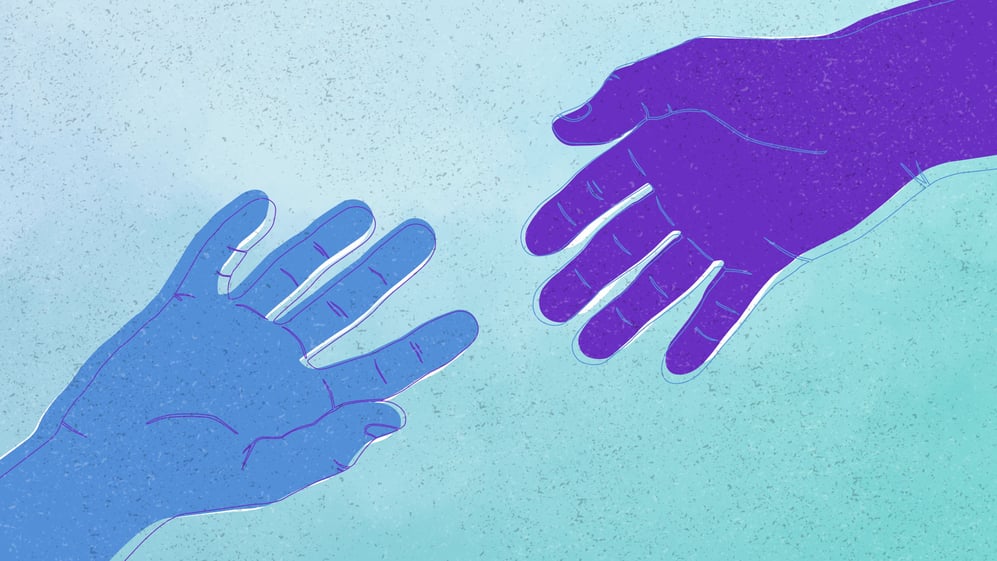I ran across a fantastic quote by Dr. Martin Luther King Jr.:
“The first question which the priest and the Levite asked was: ‘If I stop to help this man, what will happen to me?’ But…the good Samaritan reversed the question: ‘If I do not stop to help this man, what will happen to him?”
We are dealing with a lot of very emotionally charged issues in our country these days: the death of George Floyd has ignited anger and tension. What the video of Mr. Floyd reminds me of is the scene from the Passion of the Christ. It was when Jesus was given the 30 lashes. I just kept thinking, “Please stop beating him; he has had enough—where is your mercy?” The video had the same effect on me. “Please stop—where is your mercy?” All these issues and events of racism challenge us to deal with the same exchange Jesus had with the young Jewish expert in the law.
The conversation went like this:
A legal expert stood up to test Jesus. “Teacher,” he said, “what must I do to gain eternal life?”
Jesus replied, “What is written in the Law? How do you interpret it?”
He responded, “You must love the Lord your God with all your heart, with all your being, with all your strength, and with all your mind, and love your neighbor as yourself.”
Jesus said to him, “You have answered correctly. Do this and you will live.”
But the legal expert wanted to prove that he was right, so he said to Jesus, “And who is my neighbor?” Luke 10:25–29 (CEB)
At the heart of this famous exchange is a call to change. That change is still needed today.
A Priest, a Levite, and a Samaritan.
Jesus goes on to tell this young expert in the law a story.
A man was going down from Jerusalem to Jericho when he fell into the hands of robbers. They stripped him of his clothes, beat him, and went away, leaving him half dead. Then, as the account goes, a priest sees him and leaves him for dead. Then a Levite sees him and is too busy to get involved and leaves him for dead.
At this point, things are looking rather grim. Then along comes a Samaritan. Now, if you are a Jewish person hearing this story, you are thinking to yourself, “Well, this guy is toast. There is no way in the world this enemy will stop and help. If anything, he might come along and put him out of his misery.” Samaritans in that day were viewed with the same level of hatred as blacks were during the civil rights movements of Dr. King’s day.
So here we have a Jew and a Samaritan, and the unthinkable happens.A Samaritan, who was on a journey, came to where the man was. But when he saw him, he was moved with compassion. The Samaritan went to him and bandaged his wounds, tending him with oil and wine. Then he placed the wounded man on his own donkey, took him to an inn, and took care of him. The next day, he took two full days’ worth of wages and gave them to the innkeeper. He said, “Take care of him, and when I return, I will pay you back for any additional costs.” Luke 10:33–35 (CEB)
What is amazing about all of this is that if the man had known who was helping him, he probably would have rejected the help. And the Samaritan took a chance walking into town with this injured Jewish man on his donkey. The town’s people probably would have assumed he did it. But I love what the text says. The Samaritan man looks on him and had pity on him.
In the next section, we get the purpose of this parable.
“What do you think? Which one of these three was a neighbor to the man who encountered thieves?”
Then the legal expert said, “The one who demonstrated mercy toward him.”
Jesus told him, “Go and do likewise.” Luke 10: 36–37 (CEB)
Being a Neighbor to All
The challenge of our times is how to model the example of our Lord and Savior Jesus Christ. How do we show mercy on those whom God has placed around us as our neighbors? It is a sad reality that Dr. King’s dream has not come to fruition. Jesus’ desire to bring back all the lost sheep of the house of Israel is not complete. The kingdom’s work is not done.
If there are persecuted and disenfranchised, the Church of Jesus Christ has work to do to see the dream become a reality. When there are groups of people who face hatred and oppression, the dream is not complete. If there are people who we walk by when they are in need and we think we are too busy to stop to give aid, the dream is not complete.
We are called by our Lord and Savior Jesus Christ to be a neighbor to the ones who need mercy. We are called to love our neighbor as ourselves. And who is our neighbor? Anyone we meet, not just the people who look like us and think like us but everyone God places in our lives, is a neighbor.
Like the Good Samaritan, our mission in the world is to “go and show mercy.” In doing so, you model for those who are far from God the love of the Savior and the mercy and grace of God. So go and do likewise.
To read more about how you can start healing racial divides by understanding your neighbor better, click the button below.














